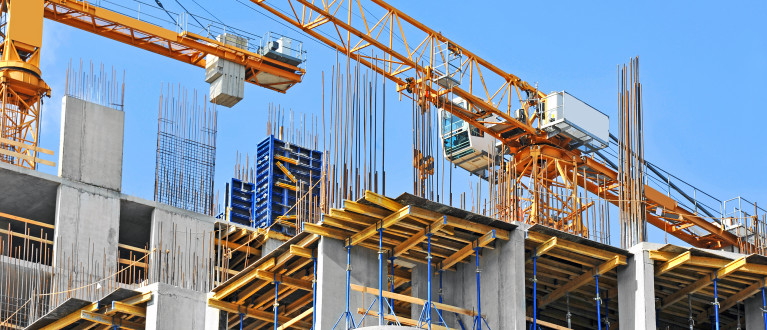VAT: distinguish between installation and assembly supplies and immovable property services
Do you carry out work on immovable property or do you install machines or other products? Then pay close attention to the VAT rules, especially if you perform work abroad.

Services related to immovable property
Services related to immovable property are defined in VAT legislation as 'services having a sufficiently direct connection with the immovable property'. Several factors play a role in the qualification of such services. First of all, there must be work on or for the benefit of immovable property. This can be work on (company) buildings, homes, roads, drilling platforms, tunnels or underwater installations or the services of architects for a specific immovable property. Agriculture, forestry and arable farming, earth-moving operations and logging can also be considered as work on immovable property for VAT. In addition, the service aspect must prevail in the work you perform. Do you also supply goods, in addition to providing the service? Then check what the qualification of the supply is.
Installation and assembly supplies
Do you supply a machine that you also install? In that case, there are in principle two supplies for VAT. You supply a good (the machine) and you perform a service (installation and assembly of the machine). These two supplies can be regarded as one supply for VAT purposes, namely an installation and assembly supply. In this case, there is only a delivery of a good. Whether the supply is considered an installation and assembly supply in your case must be assessed on a case-by-case basis and depends, among other things, on the contractual agreements between the parties.
Where is the distinction?
An example: do you install window frames in a (company) building and do you also supply these window frames yourself? Then this may be considered an installation and assembly supply. In principle, you then owe VAT in the Member State where the installation or assembly takes place. Does your customer purchase the window frames itself and do you assemble them on your own? In that case, you are providing a service related to immovable property. In principle, such a service is also subject to VAT in the member state where the immovable property is located.
The distinction is important for the VAT reverse-charge mechanism
The VAT has a reverse-charge mechanism if you have to pay VAT in an EU Member State where you are not established. In many cases you can transfer the VAT to the customer of the supply, if the customer is an entrepreneur. However, this does not apply to all supplies of goods and services. In particular, for services relating to immovable property and for installation and assembly supplies, VAT is not reverse-charged in many Member States. In those cases, you must register for VAT in the relevant Member State and pay the local VAT due on a VAT return with the foreign tax authorities. It is therefore important for the VAT reverse-charge mechanism to assess what kind of supplies you perform.
In addition, Member States set different requirements for the reverse-charge mechanism. For example, in some Member States a reverse-charge is only possible if you perform a service to a customer established in the country where you perform the work. Do you provide services to private individuals? In that case, no reverse-charge mechanism applies. You are then responsible for the correct payment of the foreign VAT.
Do you require more information?
Would you like advice and/or support in assessing your supply of goods or services? Please contact Anne Kin, international VAT specialist, by telephone on 013-5915125 or send Anne an email.






